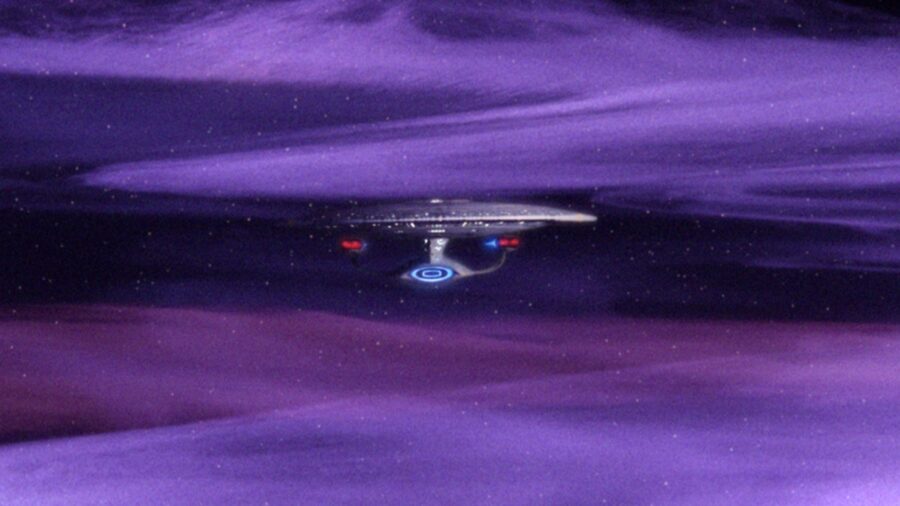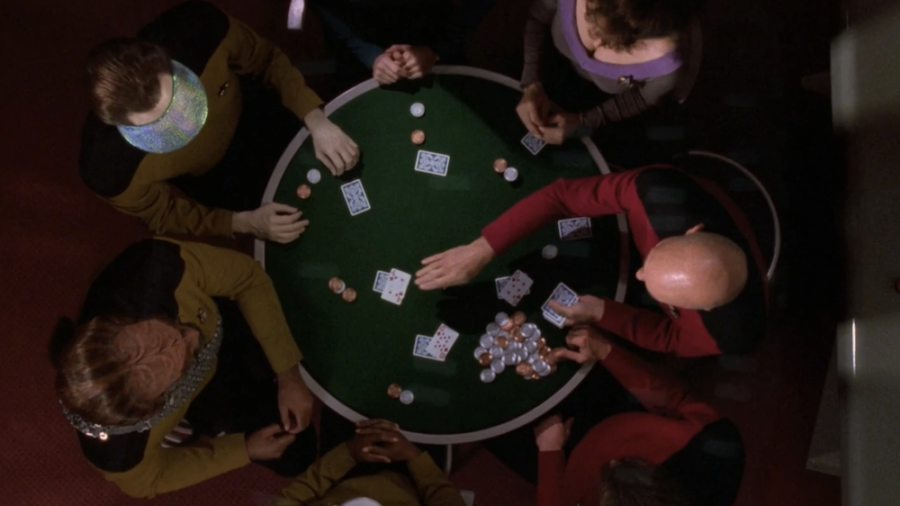Star Trek’s Best Director Hated His First Episode

He’s not exactly a household name in the fandom, but Winrich Kolbe is one of the most important directors in Star Trek history. He ended up directing 48 episodes across different series, and this included some major episodes such as the TNG finale “All Good Things” and the Voyager premiere “Caretaker.” In a bit of cosmic irony, the man who would come to so thoroughly define Star Trek hated his directorial debut, The Next Generation episode “Where Silence Has Lease.”
Nagilum

One of the things Winrich Kolbe disliked about “Where Silence Has Lease” was that the episode didn’t explore its premise in a more interesting way. If you don’t remember, this episode involved the Enterprise traveling into a mysterious hole in space and encountering a powerful being known as Nagilum.
Nagilum is like a less powerful but more amoral version of Q, using his vast powers to test humanity and learn about the concept of death by dramatically killing one crewman and then threatening to kill up to half the ship (incidentally, newly-minted Lieutenant Worf insanely considers 50 percent casualties to be “within acceptable limits”).
44 Minutes

According to Winrich Kolbe, the episode “didn’t go so far” with the premise of a creature such as Nagilum. He likened the aliens’ perspective to the way that a foreign person might view Kolbe’s own culture, deciding what does and does not make sense.
The director felt that expanding this idea into outer space gave the writers a chance “to push it further,” and he was disappointed that didn’t happen while acknowledging there is only so much ambitious storytelling that anyone can cram into “only 44 minutes.”
Murder

Beyond disliking the limitations of the story itself, what Winrich Kolbe really hated about “Where Silence Has Lease” is that it was a bottle episode that put extreme limitations on him as a director. Most of the episode took place on the Enterprise bridge, which he said “is intriguing when you step on it for the first time…Then it becomes an utter crashing bore, because it’s nothing but tan walls and a few twinkling lights.”
Never one to mince words, the director later described shooting this episode as “murder” and that shooting “that long on the bridge was the worst experience I’ve ever had.”
A Lot Of Choreography

In order to make what could have been a boring episode more visually interesting, Winrich Kolbe “did a lot of choreography on that show.” He pointed out that he rarely likes to tell actors where to move on set because “I usually like the actors to drive themselves where they have to go.”
But shooting for five days entirely on the bridge set forced the director to make one creative camera choice after another, and keeping “the camera constantly moving” meant he needed to be very specific about when and where actors moved.
As for Winrich Kolbe, he did a fair amount of moving himself. He later said, “I spent a lot of time on that bridge on my belly, hanging down from the rafters and in any other position to try and figure out what I would do with the camera.”
Fortunately, his efforts paid off: not only did he create a very visually dynamic episode, but he impressed the producers enough to become one of the most prolific directors in Star Trek history.
He Directed The Best

On The Next Generation, Winrich Kolbe went on to direct classic episodes such as “Darmok” and “All Good Things,” and on Deep Space Nine, he directed fan favorites like “Our Man Bashir” and “The Siege of AR-588.”
He directed killer Voyager eps like “Caretaker” and “Scorpion, Part II,” though his connection to that Star Trek spinoff was as personal as it was professional. For a time, he actually dated Captain Janeway actor Kate Mulgrew, though she eventually moved on and ultimately married someone else (no, it wasn’t Da Vinci).
Winrich Kolbe leaves behind a powerful Star Trek legacy, and his great work on the TNG series finale even won the talented director a Hugo for Best Dramatic Presentation.
He helped shape this Classic Trek era into the must-see TV that current fans are so nostalgic for. Weirdly enough, though, none of that would have happened if not for directing an episode that he absolutely hated filming.










